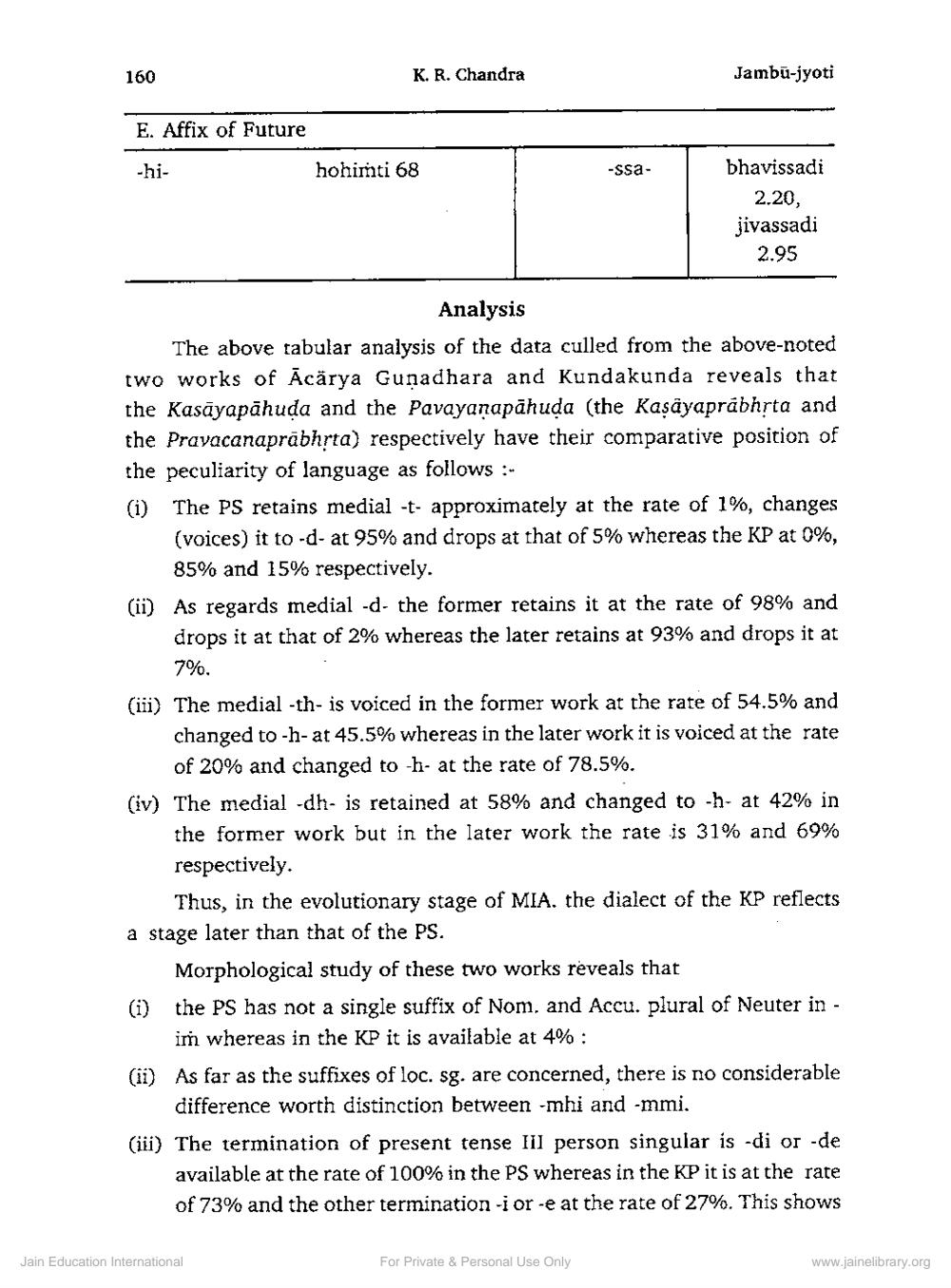Book Title: Date of Kasyapahuda Author(s): K R Chandra Publisher: Z_Nirgranth_Aetihasik_Lekh_Samucchay_Part_1_002105.pdf and Nirgranth_Aetihasik_Lekh_Samucchay_Part_2 View full book textPage 5
________________ 160 E. Affix of Future -hi K. R. Chandra hohimti 68 -ssa Jambu-jyoti Analysis The above tabular analysis of the data culled from the above-noted two works of Acarya Gunadhara and Kundakunda reveals that the Kasayapähuda and the Pavayanapahuḍa (the Kaṣayaprabhṛta and the Pravacanaprabhṛta) respectively have their comparative position of the peculiarity of language as follows: bhavissadi 2.20, jivassadi 2.95 (i) The PS retains medial -t approximately at the rate of 1%, changes (voices) it to-d- at 95% and drops at that of 5% whereas the KP at 0%, 85% and 15% respectively. (ii) As regards medial -d- the former retains it at the rate of 98% and drops it at that of 2% whereas the later retains at 93% and drops it at 7%. (iii) The medial -th- is voiced in the former work at the rate of 54.5% and changed to -h- at 45.5% whereas in the later work it is voiced at the rate of 20% and changed to h- at the rate of 78.5%. (iv) The medial -dh- is retained at 58% and changed to -h- at 42% in the former work but in the later work the rate is 31% and 69% respectively. Jain Education International Thus, in the evolutionary stage of MIA. the dialect of the KP reflects a stage later than that of the PS. Morphological study of these two works reveals that (i) the PS has not a single suffix of Nom. and Accu. plural of Neuter inimh whereas in the KP it is available at 4%: (ii) As far as the suffixes of loc. sg. are concerned, there is no considerable difference worth distinction between -mhi and -mmi. For Private & Personal Use Only (iii) The termination of present tense Iil person singular is di or -de available at the rate of 100% in the PS whereas in the KP it is at the rate of 73% and the other termination -i or -e at the rate of 27%. This shows www.jainelibrary.orgPage Navigation
1 ... 3 4 5 6 7
